Welcome home to the crew of STS-122! Space shuttle Atlantis landed at 9:08 am EST on February 20, following the STS-122 mission to install the European Space Agency’s Columbus science module on the International Space Station. After such a successful mission, its now time to sit back and enjoy some of our favorite images from Atlantis’ journey to the ISS.
Atlantis launches on February 7, 2008. Weather forecasts predicted unfavorable launch conditions, but it turned out to be a beautiful day for liftoff.
A unique picture of the external fuel tank after separation from the shuttle. Residual crygenics vent from the tank, highlighted by sunlight against the backdrop of space.
Here’s a view you don’t see everyday: a closeup of the shuttle’s nose at station approach as the shuttle performs a flip maneuver that allows the station crew to take hi-resolution photos of the shuttle’s thermal protection system.
The ISS’s Canadarm 2 moves the new Columbus science module out of Atlantis’ payload bay to its home on the station, on the starboard side of the Harmony module. This picture was taken through a window of the ISS.
Astronaut Stanley Love frames a scene with his hands during the first EVA of the mission. It was a bonus spacewalk for Love. Love filled in for Hans Schlegel, who was ill and unable to participate in the EVA. The spacewalk went off without a hitch, and was “picture perfect.”
Rex Walheim, attached to a foot restraint on the station’s robotic arm, carries a large nitrogen tank assembly — used for pressurizing the station’s ammonia cooling system — during the second EVA of the mission.
Hans Schlegel, from Germany, works on the the new Columbus science module during STS-122’s second EVA.
Dan Tani gives himself a haircut with the ISS’s specialized hair clippers that includes a suction hose to collect the hair. Tani is getting ready to return home after a four month stay on board the ISS.
Leopold Eyharts, Expedition 16 flight engineer, holds a panel inside the newly attached Columbus laboratory of the ISS. The panel bears the names of European engineers who built Columbus.
A group photo of the Expedition 16 and STS-122 crews. From the left (bottom) are NASA astronaut Steve Frick, STS-122 commander; and Peggy Whitson, Expedition 16 commander. From the left (middle row) are NASA astronaut Daniel Tani, STS-122 mission specialist; European Space Agency (ESA) astronaut Leopold Eyharts, Expedition 16 flight engineer; and cosmonaut Yuri Malenchenko, Expedition 16 flight engineer representing Russia’s Federal Space Agency. From the left (top row) are NASA astronaut Stanley Love, ESA astronaut Hans Schlegel, NASA astronauts Leland Melvin, Rex Walheim, all STS-122 mission specialists; and Alan Poindexter, STS-122 pilot.
And let’s not forget all the people back on the ground who make the space missions possible. This is a photo in Mission Control, Houston, of the Orbit 1 team for the STS-122 flight.
Rex Walheim squints in the sunlight during the third and final EVA of the STS-122 mission.
A view of the new configuration of the ISS, as the shuttle backs away from the station after undocking. The newest addition to the station, the Columbus science module, is visible, all shiny and new, on the upper part of the station, just under the Canadarm 2 robotic arm.

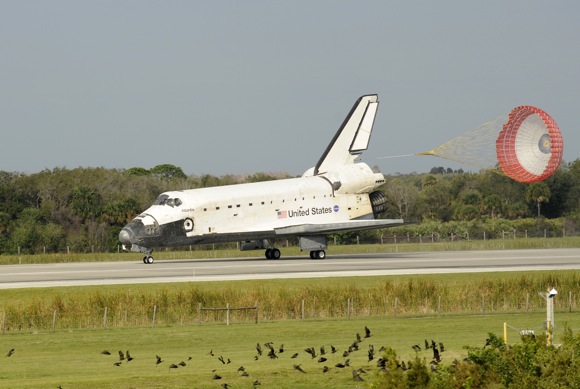
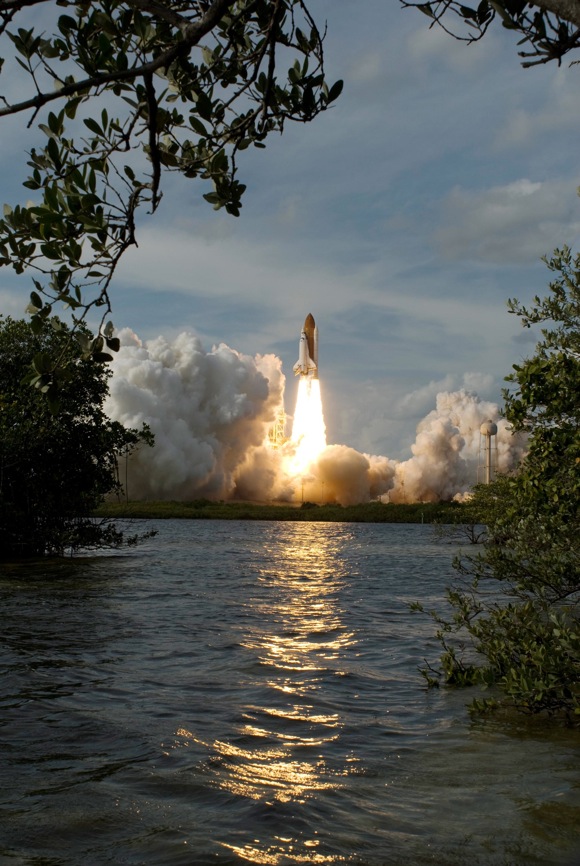
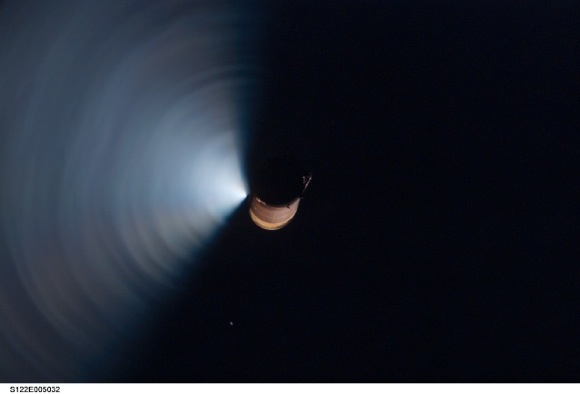
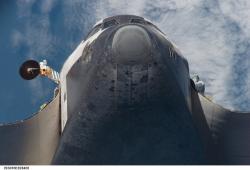
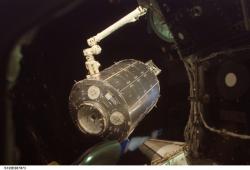
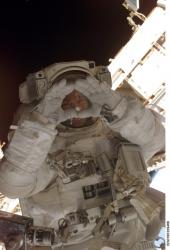
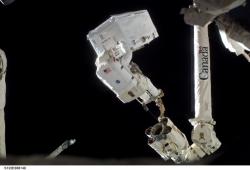
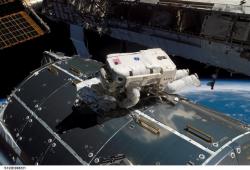
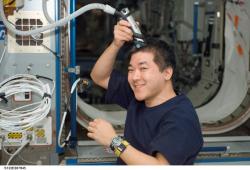

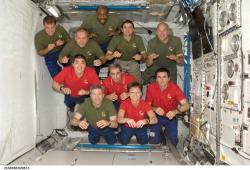
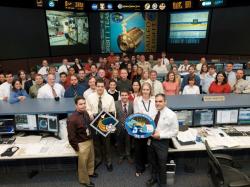
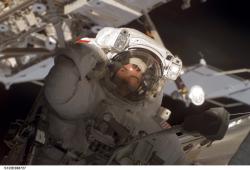
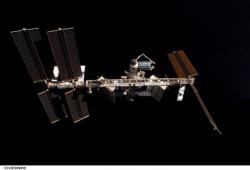
Ha, I thought I was dreaming this morning. The sonic boom must have woken me up because all I remember were rattling windows and sort of an echoey kind of noise in the air. I fell back asleep thinking, “That’s just like when the shuttle lands…when does it launch? Soon? Maybe I heard the launch…no, can’t hear the launch from here…look at the pretty purple llama…”
Ya know… it took 25 years and two horrible accidents, but I think we finally worked the bugs out of the shuttle, and at times it almost seems a shame to force them into retirement. I know it needs computer upgrades, and the basic configuration (aside the main fuel tank) is pretty dumb in hindsight (not allowing escape) and God knows why we need to send 10 astronauts up at a time… can NASA sell the fleet and equipment to a private party???
Stargazerdude is right. Once the ISS is complete, mankind will still need to build a spaceship to go to Mars. I can’t see something like that launching from the ground.
Building the Mars ship in orbit by sending its components up via the shuttles would be a good way to go.
If I was a betting man, I bet money that the next administration will reverse the order to scrap the shuttles. They were intended for a 100 mission lifespan. The shuttle retirement order was probably given so that money that would have been used on the shuttle could be earmarked for designing and building the Orion. If so, this is a short-sighted, shabby budgeting trick and will make it harder to build and maintain structures in LEO in the future. The current administration is treating the space program like a carnival concession:”Who cares what we do, we’re never going to have to answer to these rubes after January 20th 2009 and by then it will be someone else’s problem.”
In agreement – there is plenty of need left for the shuttle for any forseeable future. We will always need a shuttle type craft as long as we have a station and more working telescopes up there. The Orion mission is the red herring here. I’ll bet there will be a few spectacular Orion disasters, too, if it flies.
The photos are stunning, but it makes we wonder how much longer we will be able to spend so much money just to get pretty space images.
On this mission, we got the first taste of what it could be like to start inviting squabbling Europeans aboard our projects. Hans Schlegel’s prickly and prissy attitude was in contrast to the US tendency for accountable, and friendly, transparency. You don’t get to have absolute privacy on the ISS. It makes the taxpayers feel that you’re trying to hide things.